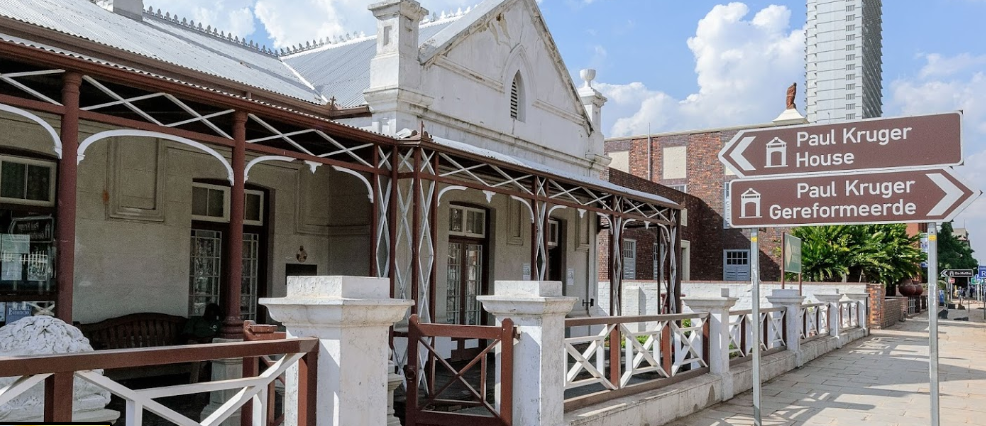
The dwelling is a low single-storey structure with few architectural features of note. However it was spacious and well built, and remains in its original condition. Only the tall trees that formerly stood close to the street verandah have been removed. The land was acquired by President Kruger in the 1860s, when he was still living on the farm Boekenhoutfontein, in the district of Rustenburg. Following the restoration of independence to the Transvaal in 1881, Kruger moved permanently to Pretoria. At about this time he bought land from a James Kelly for £500, upon which this house was built. After his election as President of the new ZAR in May 1883, contractor Charles Clark began construction on the house, which was handed over to its owner on or before 14 August 1884. Electric lighting and a telephone were installed before 1899. Kruger occupied the house until 29 May 1900 when his Government was forced to flee Pretoria before advancing British forces. His wife continued to live there however, until her death on 20 July 1901. After her death it was used by the British Military Police until 1904 when it was acquired by FC Eloff, Kruger's son-in-law, who used it until 1908, when it became the first premises of a maternity home run by the Bond van Afrikaanse Moeders. The house was purchased from the deceased; 'Estate of Eloff', on 25 August 1925 by the South African Government, who its restored the interior to its original condition. The following year it was handed over to the Transvaal Museum to house its collection of Kruger relics. The two stone lion sculptures located on either side of its entrance were presented to President Kruger as a mark of appreciation by mining magnate Barney Barnato. It was declared a National Monument under old NMC legislation on 6 April 1936.